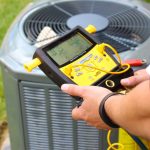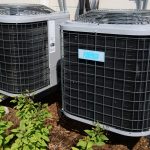Signs Your Heat Exchanger May Be Cracked
Broken heat exchangers are responsible for close to 1500 deaths a year in the United States due to gas leaks and explosions. This means that if you’re worried your heat exchanger is cracked, you can’t leave it to chance.
The heat exchanger is a component of your heating furnace made of tubes and coils, which is responsible for heating the air inside the furnace. A cracked heat exchanger can lead to the leaking of highly toxic gases such as sulfur dioxide and nitrous oxide, which can lead to serious illness and fatalities.
If you’re worried about a cracked heat exchanger, read on to find out how to spot one.
Your Heat Exchanger is Giving Off Funny Smells
The first sign your unit of heat is faulty is usually the smell. If you can smell an unusual, unpleasant smell of gas or chemicals, especially near the furnace, then you’ll need to leave the house and call in a specialist immediately.
The smell will strongly resemble formaldehyde.
Soot
Soot is just the build-up of black carbon. If you check inside your furnace and see signs of black soot, it means that something is preventing the furnace from burning properly.
The most common cause of this is a cracked heat exchange. Similarly, if you see soot around your furnace, this could also be due to cracks.
Rust or Cracks
The most visible sign of damage to your heat exchange will be rust, corrosion, or cracks to the metalwork of your heat units. The rust is often the earliest possible sign of a problem and can be caused by the exposure of your furnace to water, which will slowly corrode the surface and cause cracks.
Always take care to prevent water contact with your furnace. If you see rust or cracks, then do not run your furnace at all and call in a professional.
Water on the Floor
If you check your furnace and spot water on the floor underneath it, this could be due to a leak or combustion issue. Even a small amount of water near the furnace could be a strong sign that your heat exchanger is cracked.
It could also be due to a slightly less serious condensation issue, so you’ll need to determine the source of the water before making any judgments.
Symptoms of Gas Leaks
You should be vigilant for the symptoms of gas leaks appearing in either yourself or your family members. These symptoms can range from physical to mental, so you’ll need to be on the lookout for both.
Combustion pollutants such as nitrogen and sulfur dioxide cause immediate physical symptoms such as itchy eyes, nausea, and nose irritation. After more prolonged exposure, you may begin to suffer flu-like symptoms such as disorientation, body aches, and intense drowsiness.
If this is the case, you and your family must leave the building immediately and call for help, as the results can be lethal.
Learn More
To learn more about how to deal with a cracked heat exchanger, or to get the professional help you need immediately, don’t hesitate to get in touch with us today. Your family’s health is too important to leave to chance.





